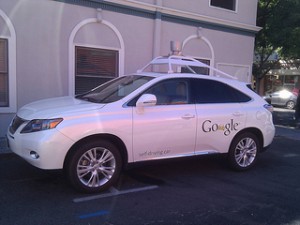From Horse Power to Horsepower to Processing Power
Some thinkers make their reputations by focusing on social justice, economic progress, or global sustainability. I took the low road and went for horse manure. It was my article on filth, flies, and putrefying horse carcasses in the 19th century city that brought me to the attention of Dubner and Levitt and, for better or worse, to this site. FYI, the article is here.
If you do peruse it, you’ll see I ended with the hope that technology will bail us out of our transportation problems just like it bailed us out of those caused by the horse. At that time, a deus ex machina descended from the heavens to improbably solve the insoluble. The savior was known as the automobile, and as it went from obscurity to ubiquity in a few decades it banished the working horse—a primary mode of transportation for thousands of years—to oblivion.
There was only one problem with my call for a miraculous technological fix: I did not have the slightest idea what that technology would be.
That was in 2006. Now, only six years later, the miracle innovation is arriving. It is not only feasible with today’s technology but is already being introduced commercially, right under our noses. There is little doubt it will be the biggest innovation in transportation since internal combustion itself. It is cars that drive themselves.
What are the potential benefits of driverless cars?
First, they promise to do wonders for traffic congestion. The reason is that human beings were not designed for the task of piloting vehicles at 70 mph; Mother Nature never conceived of us going faster than maybe 20, even when chasing the juiciest of gazelles. Our perception is poor and our reaction times slow. For this reason, we have to leave a large cushion between ourselves and the car in front of us, and we respond sluggishly when it’s time to brake or accelerate. With cars driven by microprocessor instead of synapse, superior perception and reaction times mean vehicles could be spaced much more closely together and could better coordinate their movements, for example at intersections.
I hesitate to call this a “cure” for traffic congestion, since that word has been invoked unsuccessfully before, for example when the freeway, and, for that matter, the car itself were introduced. But robocars will go a long way toward fixing our traffic problem.
Moreover, even when you do get caught in traffic, driverless cars will ameliorate your lot. Many urgent pursuits like looking up song lyrics or mastering Angry Birds could replace time otherwise wasted staring at the road. Who knows, the design of the car interior itself might turn into something resembling a little office or sitting room. Just being freed from having to stare out the window and read the annoying attempts at humor affixed to the bumper in front of you will make driverless cars worthwhile.
Driverless cars will do much to address inequity in mobility. Taxi fares will probably drop sharply when there is no longer a driver to be paid, bringing the convenience of auto travel to more low-income people. And transit service will benefit as the cost of provision falls when bus drivers are phased out.
The pressing (and growing) problem of travel by the elderly who have lost the ability to drive would largely be solved by robotic chauffeurs; this might enable people to live independently longer. At the other end of the age spectrum, once the technology is perfected we could probably send older children to school or the mall solo, saving considerable parental time and aggravation.
Driverless cars will save many lives. By maneuvering with robotic precision, they have the potential to vastly reduce the number of accidents, 90 percent of which are due to human error. This will save us fantastic amounts of grief and expense. Tens of thousands of deaths and millions of hospital visits may be avoided each year.
Bars, clubs, and beer companies have cause to rejoice; with a built-in designated driver you will never again have to worry about having one too many. Moreover, driverless cars will be programmed to obey the traffic laws, leaving the police to concentrate on more important business and sparing you from having to think up silly excuses that probably won’t get you out of the ticket anyway.
Along with mass unemployment for traffic cops, what will happen to the monetary and temporal costs of goods movement (and therefore goods) when we no longer have to pay truck drivers or leave trucks idle while drivers eat and sleep?
But will driverless cars ever arrive? In fact, they already have. You may have read that Google has sent driverless cars more than 300,000 miles in California, much of it on real roads surrounded by oblivious fellow motorists, without a single accident. (A few kinks remain to be worked out, though: Google is still having trouble with driving in snow and through construction sites.)
And lest you think there is a big gulf between technological feasibility and actual commercial introduction, driverless cars are already arriving through evolution, not revolution. We have had cruise control for decades and now we have adaptive cruise control which slows the vehicle and even jams on the brakes when collisions are impending. Also, carmakers are offering systems that alert the driver when he drifts out of his lane. Is it a great stretch to think that soon enough the car will get sick of beeping at you and just take the wheel itself? There are already cars which parallel park themselves; how long will it be before they just drop you off at the door and rid you of the miserable task of circling the block looking for a space?
As far as market acceptance, drivers are proving willing to pay for these innovations, particularly because they enhance safety. Anyway, the new sensing hardware and control software for fully autonomous vehicles may not be prohibitive. (Erik Coelingh, a senior engineer at Volvo, estimates about $3,000 per vehicle.)
Will government accommodate this development? Fortunately, the way technology is evolving it will take surprisingly little public expenditure. While it was once thought that roads would have to be equipped with fancy technology to enable driverless cars, it is now becoming clear that all the necessary equipment—cameras, radar, lidar (a sort of radar that uses light), etc.—can be onboard, with no new infrastructure necessary.
I have heard skeptics complain about legal and regulatory hurdles. Perhaps at first there will be. But it is unlikely that, given time to prove itself, a technology that drastically reduces the number of accidents will be held back because of trouble assigning responsibility for those crashes that do occur. In fact, the day will come when it is driving, not driverlessness, that the state will try to legislate away. Anyway, the regulatory road has already begun to be paved; Nevada is now issuing driverless car licenses.
Lest I get carried away, it’s important to remember a caveat from the horse manure story. While the auto did eliminate the problem of horse pollution, as we
now know it sowed the seeds for vexing new environmental problems of which proponents at the time were blissfully ignorant. How might driverless cars make us be careful what we wished for?
In one way, driverless cars promise to cut fuel consumption and emissions, by coordinating car movements in a way that smooths traffic flow and improves aerodynamics through the “platooning” of the vehicles. However, by making car travel so much cheaper, faster and easier, driverless cars may harm the environment by promoting lots more driving. It is true that other technology is currently addressing this problem, with electrification (e.g., the Volt) and many other efficiency improvements like improved transmissions, materials, tires, and aerodynamics. Still, emissions and fuel use will remain a vexing problem that driverless cars could conceivably exacerbate.
By making driving easier and more pleasant, and by cutting congestion and thus reducing travel times, driverless cars promise to increase suburbanization and “sprawl” as people choose to live farther from the central city and their places of work. But whether this is a problem is in the eye of the beholder, and is a topic for another day. And it is possible that driverless cars might also foster density, if people are willing to switch to car sharing and we need fewer parking places.
Nobody has mentioned this yet, but the number of organ donors will plummet when the supply of auto accident victims dries up, though I’m sure all of us would accept that trade-off.
On the lighter side, Hollywood will have to come up with a substitute for interminable car chases, and a microprocessor will be less fun to hate than Jeff Gordon. Still, on balance, getting humans out from behind the wheel will be well worth it.
Obviously, there is going to be pushback against this technology, because for many the idea of computers ruling the world is kind of scary. Driverless cars will ultimately result in tremendous safety improvements, but no doubt accidents involving computer control are going to get major publicity because the technology is new and exotic, while old-fashioned deaths due to human error are too humdrum to make the news. We are going to have to overcome fears that our robocars will cut our life support systems while we are in suspended animation or flush us out of the airlock like the HAL 9000. Indeed, when the car itself was introduced, safety issues led to widespread public protest, including mass demonstrations and riots. It is unclear how many decades it will take for robocars to be accepted and reach their full potential.
But one key factor works in robocars’ favor. Unlike many other methods for ameliorating the problems caused by automobility, technological improvements in the auto have a proven track record of adoption and success. Crash fatality rates have plunged and fuel economy has surged over time thanks to technology. The reason for this success is that technology can fix problems without asking Americans to sacrifice the mobility to which they have been accustomed, and in the case of driverless cars will even increase mobility, as the auto itself did.
Surprisingly few people, even within the transportation planning world, are talking about this pending revolution. The Economist has been writing about it (see this, and this which goes into the technology issues I don’t have space to cover here), but as usual few people are as smart as they are.
But though modern thinkers might be neglecting this issue at the moment, I’ll bet some lucky future historian is going to get as much mileage chronicling the almost-forgotten foibles of inept human drivers as I got from horse droppings.



Comments